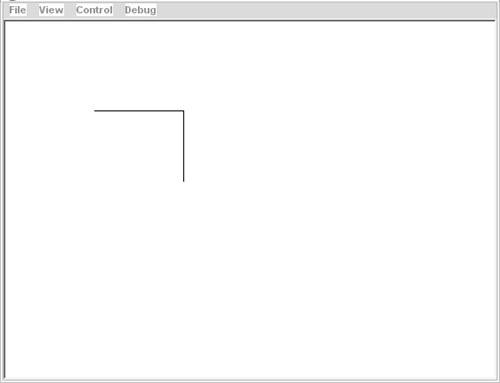Dispatching Events
| There are lots of ways to design an application. Each has relative advantages and disadvantages. Yet there are general principles that can help to make designs more flexible and manageable. One such principle states that loosely coupled systems are more flexible than tightly coupled systems. A tightly coupled system is one in which the elements have specific rigid interfaces in which they interact. For example, A can interact with B only if it knows a specific method to call on Bthat is a tightly coupled system. A loosely coupled system is one in which the elements know little to nothing about one another. Instead, elements can send out notifications when states have changed, and any element that happens to be listening for that notification can respond. That way, A doesn't have to know anything about B, and B doesn't have to know anything about A. Instead, B can listen for a notification from A, and when A sends the notification, B can respond. We call the notifications events, and when an object listens for an event, we call it a listener. If you've worked with the user interface (UI) components in Flash 8, you're already familiar with basic event dispatching. For example, a Button component dispatches a click event when the user clicks it with the mouse. The Button instance sends the event, and any listener that happens to have registered for notifications for the click event will respond. The event-dispatching system that the UI components use is accessible to you to use within your classes as well. The event-dispatching system is built in a class called mx.events.EventDisatcher. The EventDispatcher class uses a methodology that is unique to prototype-based languages such as ActionScript. The class is known as a mix-in class because it injects functionality into a class at runtime. The concept of a mix-in class is not familiar to most people because prototype-based languages are not very common and because although ActionScript is prototype-based, the prototype nature of ActionScript is hidden in ActionScript 2.0. Therefore, if you aren't familiar with the way prototypes work, you needn't concern yourself with exactly how mix-in classes work. Simply know that mix-in classes are capable of adding methods and properties to objects at runtime. In the case of EventDispatcher, it adds the addEventListener(), removeEventListener(), and dispatchEvent() methods to a class at runtime. You can add the event dispatching functionality to an instance of a class by calling the static Eventdispatcher.initialize() method and passing it a reference to the instance of the class. Typically, you'll want to call the initialize() method from the constructor. The following example adds event dispatching to the Example class: import mx.events.EventDispatcher; class Example { public function Example() { EventDispatcher.initialize(this); } }Although the initialize() method adds the methods at runtime, you'll want to reference the methods from your code. Because you aren't defining the methods in the class the Flash compiler will throw an error. For example, if you construct an instance of Example, and you try to call addEventListener(), the compiler will thrown an error because as far as it can tell there is no addEventListener() method. The method is getting added at runtime, but you have to tell the compiler about that. You can effectively communicate to the compiler that the methods will exist by declaring properties with the method names as in the following. public var addEventListener:Function; public var removeEventListener:Function; private var dispatchEvent:Function; The addEventListener() and removeEventListener() methods are likely already familiar to you because they are identical to the methods you use with UI components. The dispatchEvent() method is probably not familiar to you, however. It is a method that you use within the class to dispatch an event. The method requires one parameter. The parameter must be an object with a type property specifying the name of the event to dispatch. For example, if you want to dispatch an event called exampleEvent, the dispatchEvent() method call might look like the following: dispatchEvent({type: "exampleEvent"});The event object is passed to any listeners. Therefore, any additional values you want to pass to the listener can be passed as properties of the event object. By convention, the event object generally also has a target property that references the object dispatching the event. dispatchEvent({type: "exampleEvent", target: this});In this task, you'll build a class that animates the drawing of lines. When each line segment is drawn, it will dispatch an event. In this particular case, once the event is dispatched a listener will get notified, and it will draw the next segment from an array.
|
EAN: 2147483647
Pages: 221
- Challenging the Unpredictable: Changeable Order Management Systems
- ERP System Acquisition: A Process Model and Results From an Austrian Survey
- Enterprise Application Integration: New Solutions for a Solved Problem or a Challenging Research Field?
- The Effects of an Enterprise Resource Planning System (ERP) Implementation on Job Characteristics – A Study using the Hackman and Oldham Job Characteristics Model
- Healthcare Information: From Administrative to Practice Databases
